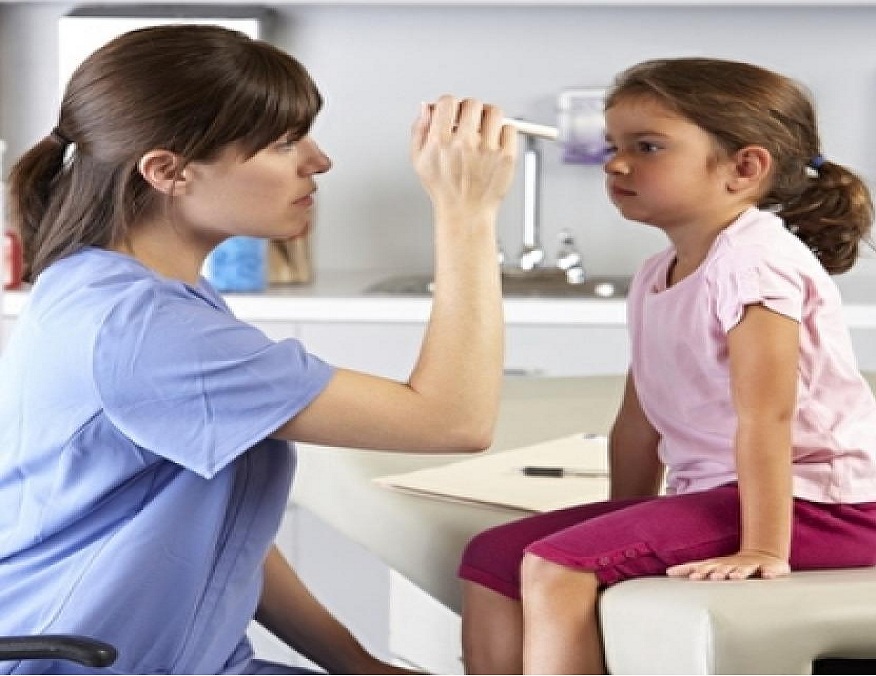When diagnosing traumatic brain injury (TBI), pupil measurement is an indispensable tool in the toolbox of any adept neurologist. By closely examining pupillary light reflex (PLR) changes and judiciously employing cutting-edge neurological tools such as the Neurological Pupil Index (NPi), medical practitioners can delve deeper into the injury’s severity, facilitating accurate diagnosis and targeted treatment.
This blog post explores the intriguing dynamics of pupil measurements, their remarkable potential in TBI diagnosis, the influence of pupillary light reflex, and the role of advanced neurological tools.
Pupillary Light Reflex (PLR) in Traumatic Brain Injury
PLR is an essential physiological function that regulates pupil size in response to varying light conditions. It’s more than a reflex; it’s a window into the brain’s function. In TBI, it carries immense clinical significance, offering a glimpse into the severity of the injury. The pupillary response in traumatic brain injury involves an intricate network of neural pathways, from the retina to the midbrain and back to the muscles controlling the pupil.
A disrupted PLR could be the harbinger of serious brain damage. It’s worth noting, however, that many factors can influence the PLR’s accuracy. From the patient’s consciousness level to eye integrity and even the impact of certain medications, all these elements can potentially skew PLR readings.
Neurological Tools for Pupil Measurement
Manual and automated neurological tools are available for pupil measurement, each presenting unique strengths and drawbacks. While simple and time-honored, manual methods are subject to human error and inter-examiner variability. On the other hand, automated tools, such as pupillometers, have transformed the landscape of pupil assessment.
These devices provide a detailed analysis of the pupil’s size, reactivity, and even subtle changes over time, offering a more accurate and reliable insight into the patient’s neurological status. Factors like cost-effectiveness, availability, user-friendliness, and ease of interpretation should be considered when choosing the right tool for the task at hand.
Quantitative Pupillometry
Quantitative pupillometry is an advanced pupillary assessment technique that takes the guesswork out of pupil measurements. A quantitative, objective measure of pupillary function empowers physicians to make informed decisions about TBI’s diagnosis, treatment, and prognosis.
For instance, devices like the NeurOptics NPi-300 Pupillometer provide reliable, real-time data about the patient’s neurological status, including pupil size and reactivity to light. This information is invaluable in diagnosing TBI and tracking the injury’s progression and response to treatment. As we continue to harness technology in healthcare, such advanced neurological tools become ever more crucial in delivering quality patient care.
Pupil Dilation and Constriction Measurements
Assessing pupil dilation and constriction provides key insights into brain function and injury severity. In TBI patients, sudden or gradual changes in these parameters can signify increased intracranial pressure or brainstem dysfunction.
Modern pupillometry devices can quantify these changes, enabling physicians to intervene promptly and potentially prevent further deterioration. However, these measurements should never be viewed in isolation. Rather, they should be part of the broader clinical picture, encompassing imaging findings, clinical history, and the patient’s overall condition.
Limitations of Pupil Measurement in Traumatic Brain Injury
While pupil measurement provides invaluable insights into TBI diagnosis and monitoring, it has limitations. Factors outside the physician’s control can influence pupil size and reactivity, such as medication effects, lighting conditions, and the patient’s baseline pupil characteristics.
Furthermore, interpreting pupil measurement data can be challenging, especially when it conflicts with other clinical or diagnostic findings. Despite these limitations, awareness allows physicians to navigate these potential pitfalls and apply this knowledge more effectively in the clinical setting.
Integrating Pupil Measurement with Other Diagnostic Tools
Pupil measurement is most effective when combined with other diagnostic methods, such as neuroimaging, neuropsychological tests, and comprehensive neuro exams. This multimodal approach provides a more holistic view of the patient’s condition, enabling more accurate diagnoses and personalized treatment plans.
Clinical scenarios where this integrated approach has significantly improved patient care and outcomes testify to its value.
Conclusion:
Pupil measurement is pivotal in TBI assessment, providing a vital glimpse into the brain’s functional status. The power of pupillary light reflex, combined with advanced neurological tools like NPi, enables clinicians to decipher the severity of brain injuries and craft appropriate treatment strategies. While the path is not without challenges, understanding these limitations helps overcome them, refining the art and science of TBI diagnosis.

